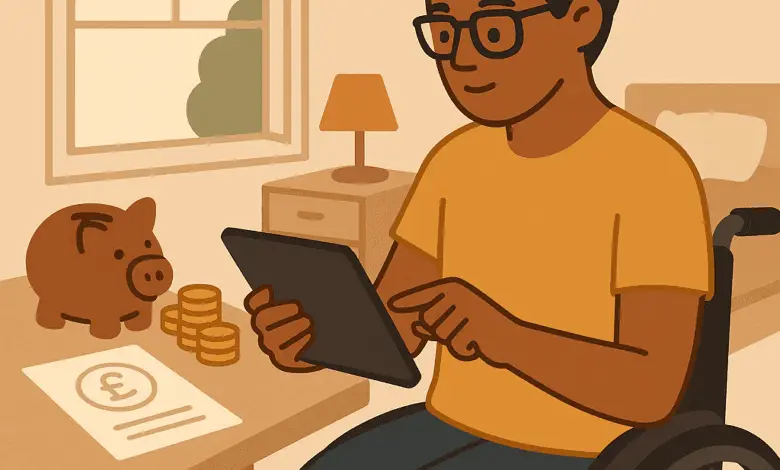
How Disabled Students Can Tackle Barriers to College Life
For many disabled students, college life means balancing ambition with access. From inaccessible classrooms to fluctuating health, the barriers are real — but so is the determination to build inclusive spaces that work for everyone. Here’s how disabled students can tackle those barriers, use support systems effectively, and create a meaningful, independent college experience.
Key Takeaways
| Challenge | Inclusive Perspective | What Helps |
| Accessibility gaps | Barriers are environmental, not personal | Request adjustments early under the Equality Act 2010 |
| Academic pressure | Education should adapt to the student | Disability services can provide support and adjustments |
| Emotional wellbeing | Emotional stability helps manage long-term stress | Build mental health strategies and accessible routines |
| Financial stress | Access often costs more | Understand the importance of emergency savings and explore DSAs or bursaries |
| Isolation | Belonging matters as much as study | Build strong support systems through peers and inclusive societies |
1. The Real Barriers Behind College Life
Starting college can be both exciting and challenging. For disabled students, that excitement often includes an extra layer of planning — accessible housing, lecture halls, or technology. These aren’t personal hurdles to “overcome”; they’re design flaws that exclude.
The Social Model of Disability reminds us that people are disabled by inaccessible environments and attitudes, not by their conditions. Colleges have a legal and moral duty to ensure equal access — from lecture captions and sensory-friendly spaces to digital materials that work with assistive technology.
You shouldn’t have to fight for access that should already exist.
2. Academic Pressures and Fair Adjustments
The academic side of college can quickly feel overwhelming if systems aren’t inclusive. Standardised deadlines, inaccessible platforms, or rigid attendance policies often disadvantage disabled students.
That’s why early engagement with your university’s disability or accessibility office is crucial. They can help you secure reasonable adjustments, such as flexible deadlines, lecture capture, or accessible learning software.
Disabled Students’ Allowances (DSAs) can also fund equipment, ergonomic tools, or assistive software to make studying more practical and sustainable. Education should be about learning, not endurance.
3. Emotional Wellbeing and Balance
College life can be emotionally demanding — especially when constant advocacy is part of the routine. Finding emotional steadiness is vital for managing both study and self-advocacy.
Emotional stability doesn’t mean suppressing feelings; it’s about maintaining perspective and having tools to manage pressure. Mindfulness, accessible counselling, peer support, or creative outlets can all help sustain wellbeing.
If you access mental health services on campus, check whether they’re accessible — from physical entry to digital forms and communication formats. True inclusion includes emotional accessibility.
4. Financial Independence and Access Costs
Financial barriers are a common source of stress for disabled students. Extra costs such as adaptive equipment, travel support, or accessible housing can stretch budgets thin.
Planning early can make all the difference. The importance of emergency savings applies here too — especially for unexpected expenses related to access. Combine this with grants, DSAs, and charitable support from organisations like Scope or Turn2Us.
Financial independence is about more than money; it’s about having enough security to focus on education, not survival.
5. Building Community and Support Systems
College can be isolating, especially when social events happen in inaccessible venues or when others don’t understand your experiences. But you’re not alone — and community is one of the most powerful tools disabled students have.
Strong support systems — friends, mentors, online spaces, and student-led disability societies — provide both connection and advocacy.
These networks aren’t just emotional safety nets; they’re catalysts for change. Shared experiences often lead to campaigns, accessibility reforms, and inclusive events that make college better for everyone.
6. Technology and Inclusive Innovation
Technology can be a lifeline when it’s designed with accessibility in mind. From speech-to-text apps to inclusive furniture and digital tools, innovation supports independence.
Many life-changing products are designed by disabled innovators themselves — proof that lived experience drives the most practical solutions. Inclusive technology isn’t just useful; it’s empowering.
Looking Ahead
Disabled students continue to reshape what education looks like. Every request for a captioned video, a quiet space, or accessible housing pushes higher education towards genuine inclusion.
The goal isn’t to “overcome” college; it’s to make it a space where everyone can participate fully.
With accessible systems, peer support, and growing advocacy networks, that goal is not only possible — it’s already happening.